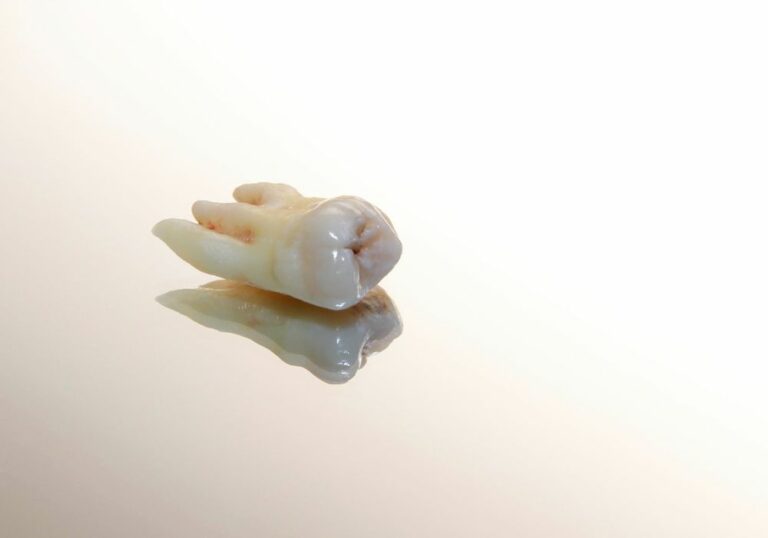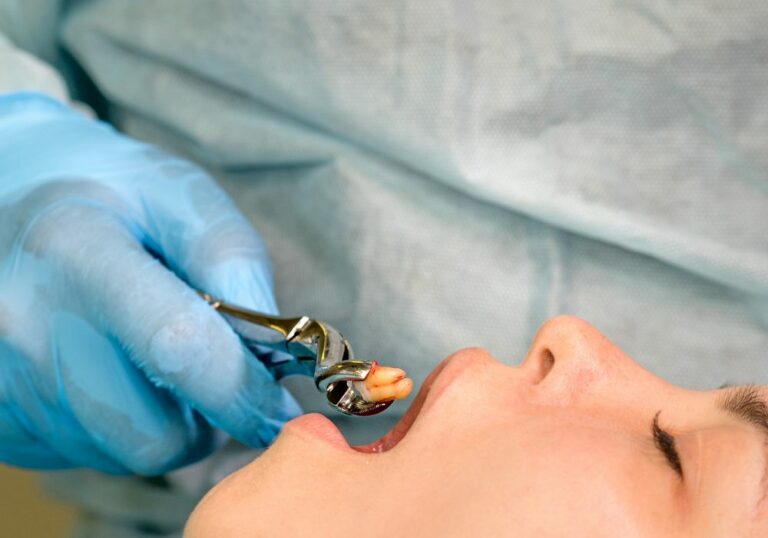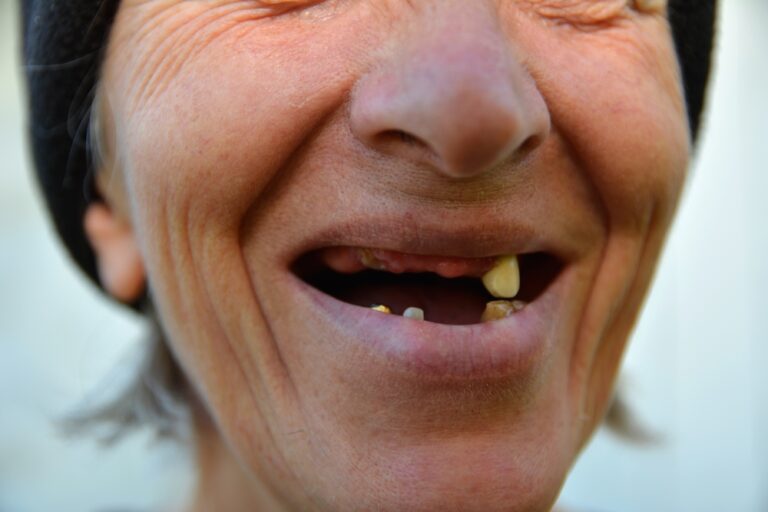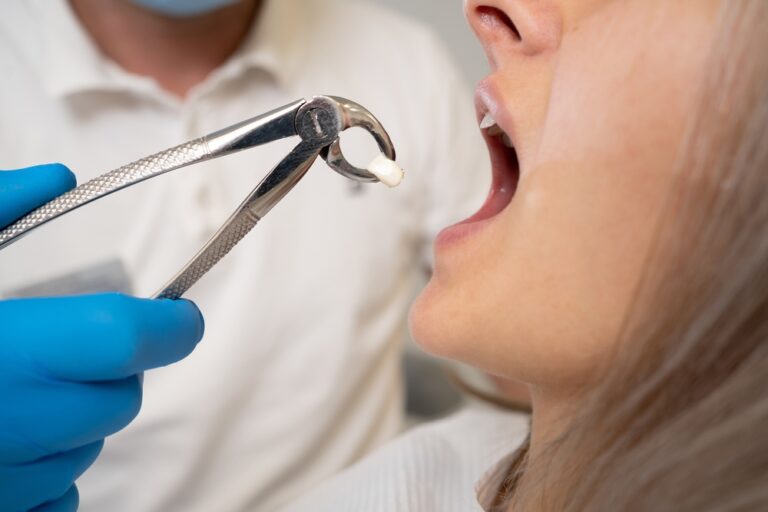Oil pulling is an ancient Ayurvedic oral health practice that has gained immense popularity in recent years. It entails swishing oil around the mouth to eliminate toxins, plaque, and harmful bacteria. The oil “pulls” out impurities in your mouth for better oral hygiene. But should you brush your teeth before or after oil pulling? Here is an in-depth look at the pros and cons.
How Oil Pulling Works
Before deciding when to oil pull, it helps to understand how it works:
- Oils like coconut, sesame, and sunflower contain antimicrobial agents that destroy plaque-causing bacteria.
- As you swish the oil vigorously between teeth for 15-20 minutes, it essentially works like a magnet attracting and sticking to toxins.
- The thick oil can penetrate deep crevices where your toothbrush can’t reach to pull out debris and bacteria.
- Oil pulling also creates a protective coating around teeth to prevent new bacteria from adhering.
- Spitting out the oil removes bound toxins, leaving you with a deeply cleansed mouth.
The Benefits of Oil Pulling
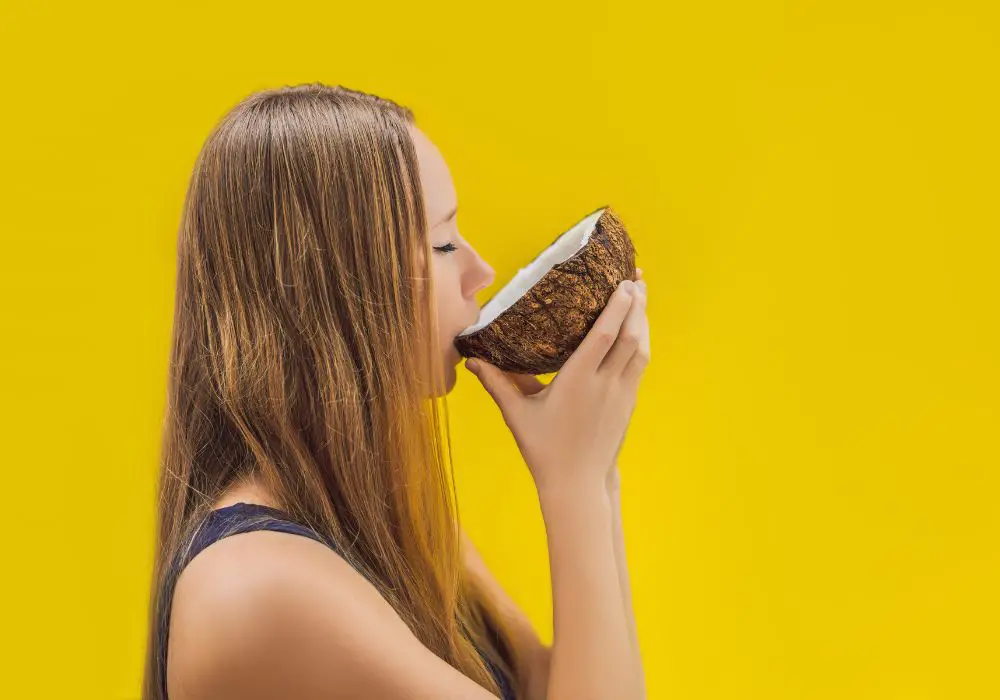
Research shows that regular oil pulling provides remarkable oral health benefits:
- Reduces bad breath – The antibacterial agents kill odor-causing bacteria.
- Whitens teeth – As it moves through teeth, the oil scrapes away stains.
- Strengthens gums – Anti-inflammatory properties reduce gum inflammation and bleeding.
- Prevents cavities and tooth decay – Plaque and bacteria buildup are decreased.
- Kills harmful oral bacteria – Antimicrobial compounds reduce infection-causing microbes.
- Boosts immunity – Bacteria and inflammation in the mouth are linked to overall health.
- Improves oral hygiene – Oil pulling combined with brushing and flossing optimizes cleaning.
Oil Pulling Before Brushing

Pros of Oil Pulling Before Brushing
There are some advantages to oil pulling as part of your morning ritual before eating, drinking, or brushing:
- Your mouth is at its freshest first thing in the morning before any new bacteria enter. Oil pulling can deeply clean and detoxify your oral microbiome starting with this clean slate.
- It allows more direct contact between the oil and your teeth/gums without any debris in the way, maximizing its plaque-removal effects.
- Oil pulling on an empty stomach may lead to deeper detoxification as the oil is able to “pull” out toxins without any new food or drink interactions.
- You can multitask, oil pulling while doing other morning prep activities before having to brush your teeth.
- Oil creates a protective barrier coating your teeth before you eat or drink anything potentially staining.
Cons of Oil Pulling Before Brushing
However, there are some potential disadvantages to oil pulling first thing:
- Oil residue could be left behind in hard-to-reach spots or between teeth without brushing afterward.
- You may have to spit excess oil into the trash or a paper towel to avoid clogging sink drains before brushing.
- Swishing for 15-20 minutes drags out the before-brush routine, which could disrupt your schedule.
- The oil will mix with some remaining oral bacteria overnight, becoming slightly less fresh.
- Interactions between lingering toothpaste flavor and oil taste could be unpleasant.
Oil Pulling After Brushing
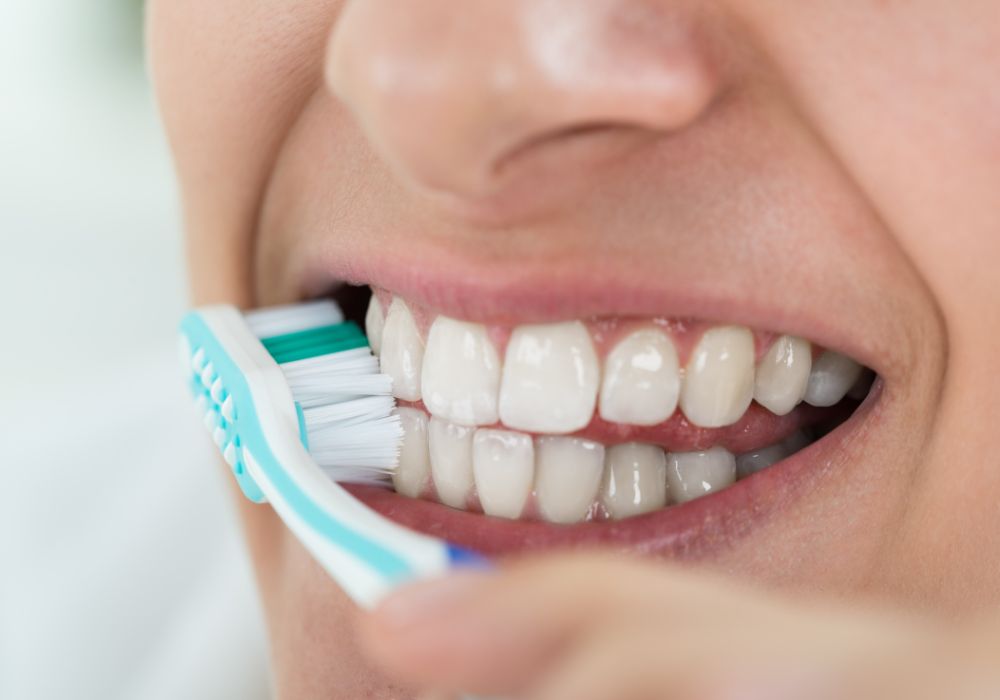
Pros of Oil Pulling After Brushing
On the other hand, deferring oil pulling until after your teeth are brushed has these benefits:
- Brushing first clears away larger debris for the oil to work with a cleaner mouth canvas.
- The oil can help dislodge anything brushing may have missed in small crevices between teeth, enhancing your brushing.
- Waiting until after brushing avoids spitting excess oil into your otherwise clean sink.
- Starting with a bacteria-free mouth from brushing allows the oil to stay fresher longer during swishing.
- The antibacterial properties of oil pulling help fortify teeth further after brushing against residual bacteria.
Cons of Oil Pulling After Brushing
Postponing oil pulling also has some potential drawbacks:
- Brushing could wash away some of the oil before it finishes fully working.
- Oil pulling on an empty stomach is thought to offer greater detox effects.
- You need to wait at least 20 minutes after brushing before eating or drinking for optimal oil pulling.
- It adds another step to your oral hygiene routine beyond just brushing and flossing.
- Having a clean oil-free palate is best for tasting and judging the freshness of the oil.
Step-By-Step Guide for Oil Pulling Before Brushing
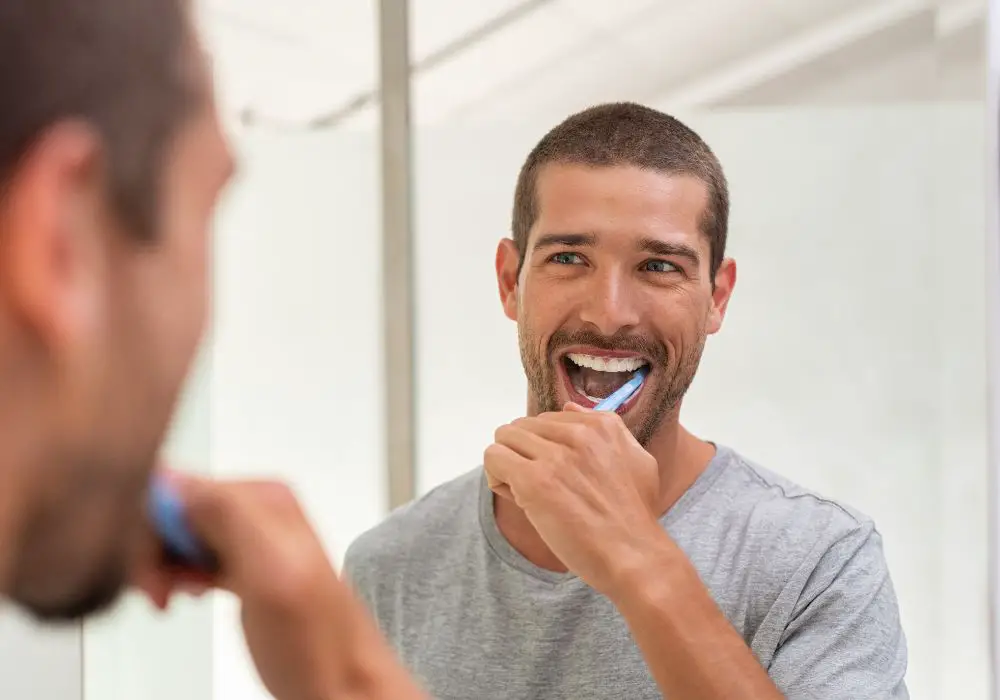
If you wish to oil pull before brushing, follow these steps:
- Measure out 1 tablespoon of coconut, sesame, or sunflower oil first thing after waking up.
- Swish the oil vigorously around your mouth for a full 15-20 minutes. Do not swallow any.
- Spit oil out carefully into the trash or a paper towel to avoid plumbing clogs.
- Rinse mouth thoroughly with regular water.
- Proceed with brushing and flossing as normal.
- Repeat oil pulling before brushing 1-3 times per week as desired.
Step-By-Step Guide for Oil Pulling After Brushing
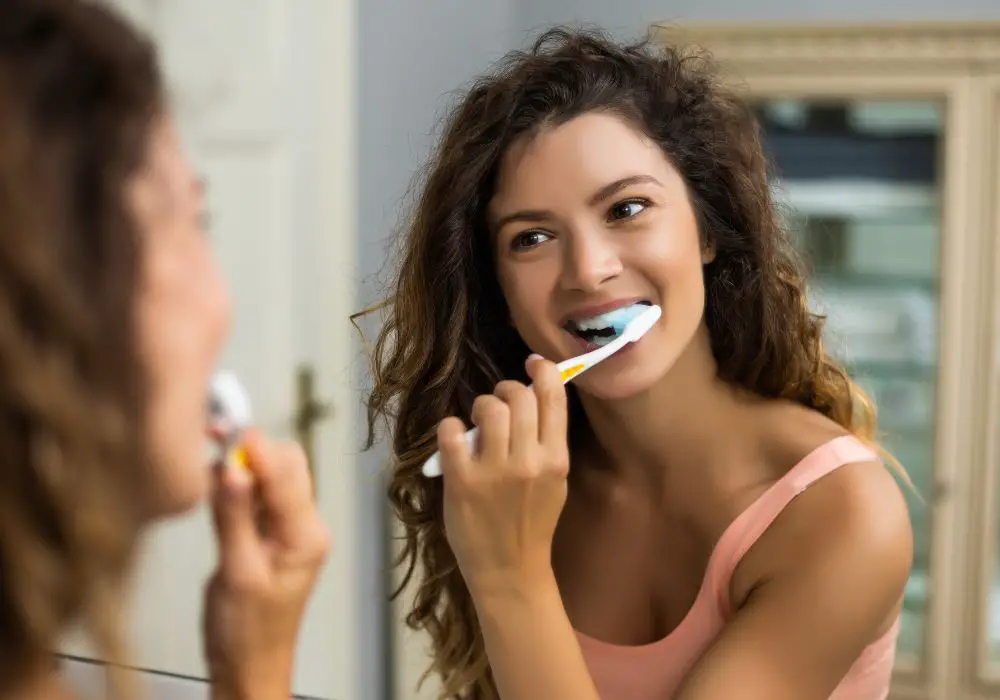
To integrate oil pulling into your oral care after brushing, follow these steps:
- Brush and floss teeth thoroughly upon waking up per usual.
- Take 1 tablespoon of your preferred oil (coconut, sesame, etc).
- Swish oil vigorously around mouth for 15-20 minutes, pulling it between teeth.
- Spit oil out carefully into trash can or paper towel after. Avoid spitting into drains.
- Rinse mouth out very thoroughly with water to eliminate oil residue.
- Repeat oil pulling after brushing 1-3 times weekly for added oral health benefits.
Choosing Your Oil Pulling Oil
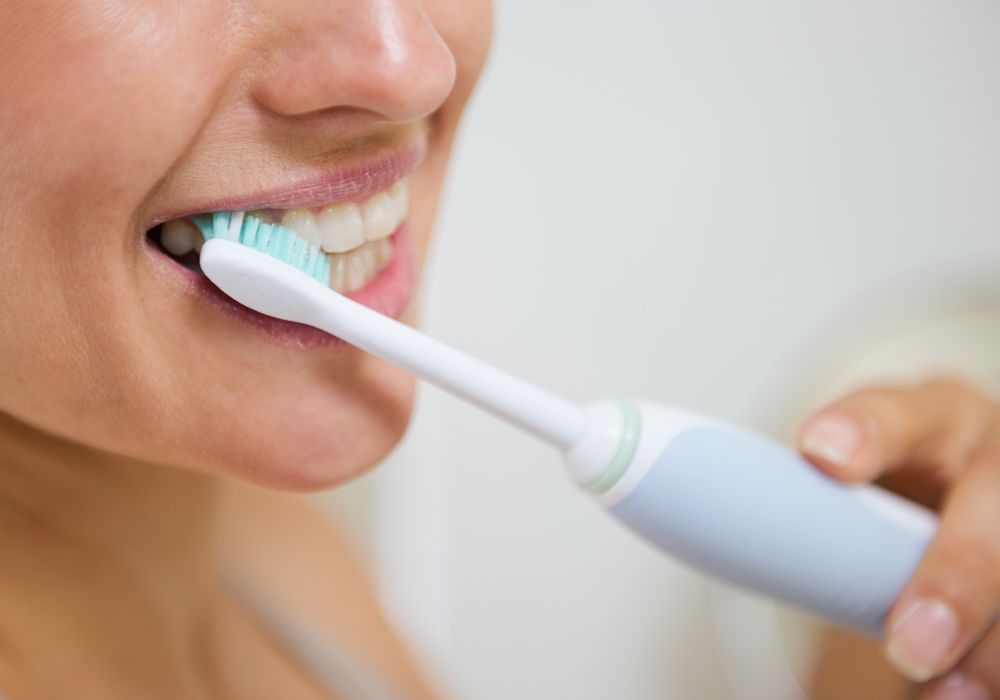
You have options when it comes to selecting an oil for pulling:
Coconut oil – Has natural antimicrobial and anti-inflammatory properties to combat bacteria and plaque. The lauric acid content adds antiviral effects. Its natural sweetness makes it more palatable than other oils.
Sesame oil – Traditional choice for oil pulling thanks to its antibacterial effects. It also contains vitamin E and antioxidants to reduce gum inflammation. Sesame oil has a strong flavor.
Sunflower oil – Light in texture and neutral in taste makes it a popular choice. Contains vitamin E, antioxidants, and antimicrobial agents to destroy bad oral bacteria.
MCT (medium chain triglyceride) oil – Derived from coconut oil, MCT is tasteless and odorless. Its thin consistency swishes easily between teeth to lift debris. Provides antimicrobial and antibacterial benefits.
Olive oil – Loaded with anti-inflammatory compounds to soothe swollen gums and oral tissues. Has antimicrobial effects against plaque-causing bacteria. Olive oil has a distinct strong taste.
Oil Pulling Precautions

Oil pulling is generally safe and simple but there are some precautions:
- Always spit out the used oil – never swallow it. Accidentally ingested oil could cause diarrhea or stomach upset.
- Start slowly if new to oil pulling; 1-2 minutes and gradually increase time.
- Consult your dentist before oil pulling if you have issues like TMJ, caps, crowns, or fillings.
- Pregnant women should talk to their OB-GYN before oil pulling.
- Oil pulling can initially trigger mild detox symptoms like headache, fatigue, congestion, etc. Stay hydrated.
- Don’t let children under age 5 oil pull due to potential swallowing/choking hazards.
- Monitor for cracking around lips or mouth irritation and discontinue use if they occur.
The Ideal Oil Pulling Routine
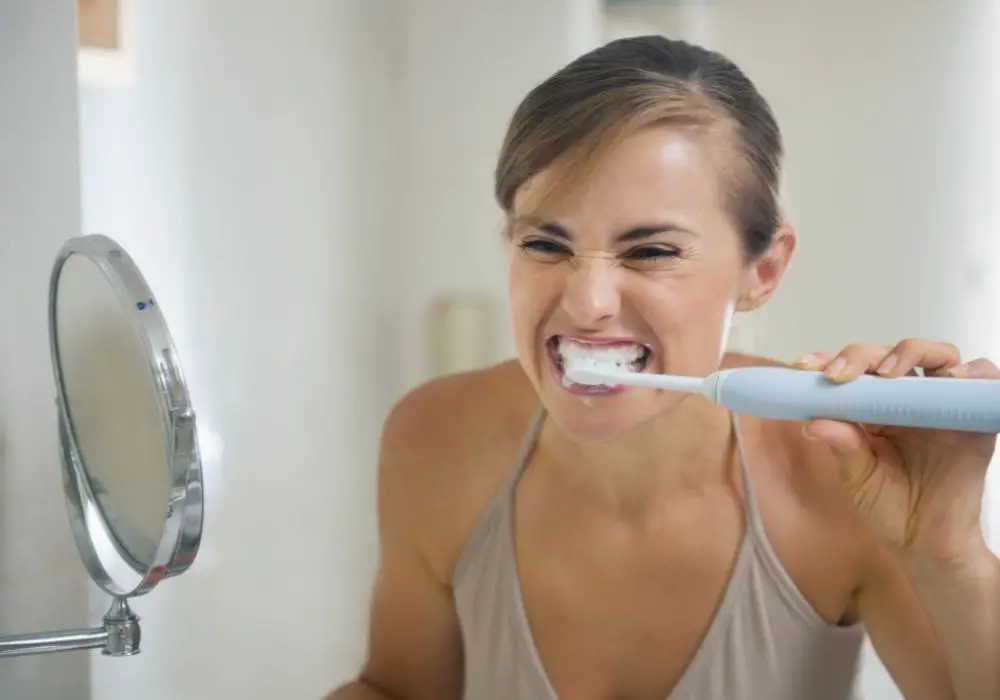
Most dental professionals advise oil pulling 2-3 times per week for optimal effects. Here are some tips for an ideal routine:
- Consistency matters more than the timing – aim to oil pull at the same time each day whether before or after brushing.
- Time your sessions for full 15-20 minutes of active oil swishing for best results.
- Always buy high-quality organic, cold-pressed oils to avoid unwanted additives.
- Use coconut, sesame, or sunflower oil to start until you determine your preferred taste.
- Rinse mouth thoroughly after to eliminate any remaining oil residue.
- Combine oil pulling with brushing, flossing, tongue scraping, and mouthwash for complete oral care.
The Bottom Line
There is no definitive right or wrong answer when it comes to the order of brushing and oil pulling. Both sequences offer pros and cons. Doing either at the same time each morning is better than skipping the oil pulling altogether. Maintaining the routine of swishing oil regularly for 15-20 minutes is what matters most.
Listen to your body and determine when oil pulling feels best and fits most seamlessly into your regimen. Be sure to continue brushing and flossing twice daily either way. Using oil pulling as a supplement to your daily dental hygiene, along with professional cleanings, will maximize your oral health over time.
Frequently Asked Questions
1. Should I rinse with water after oil pulling?
Yes, it is recommended to thoroughly rinse out your mouth with water after oil pulling. Swishing water helps eliminate any remaining oil residue left behind in your mouth. Avoid using mouthwash right after as it can interact with residual oil.
2. Can I oil pull while showering?
You can multitask and oil pull while showering, but it may reduce effectiveness. Oil pulling requires your full attention to swish vigorously and pull the oil between all teeth. If showering distracts you, it’s better to focus solely on oil pulling.
3. Does oil pulling whiten teeth?
Yes, oil pulling naturally whitens and brightens teeth over time as the swishing action scrubs away stains on enamel. Coconut oil is especially effective for whitening due to its naturally abrasive texture. Keep in mind results take consistency over weeks and months.
4. How long does oil pulling take to work?
It may take 2-4 weeks of consistent oil pulling to see initial results like a reduction in plaque. But some notice benefits like fresher breath right away. Full effects for whiter teeth, healthier gums, etc. develop over 1-3 months. Be patient and stick with it.
5. Can I talk while oil pulling?
You should avoid talking while actively oil pulling, as it compromises the technique. Swallowing any saliva or oil during pulling can introduce new bacteria. Remain silent and focus on swishing the oil thoroughly for the full 15-20 minutes instead.

